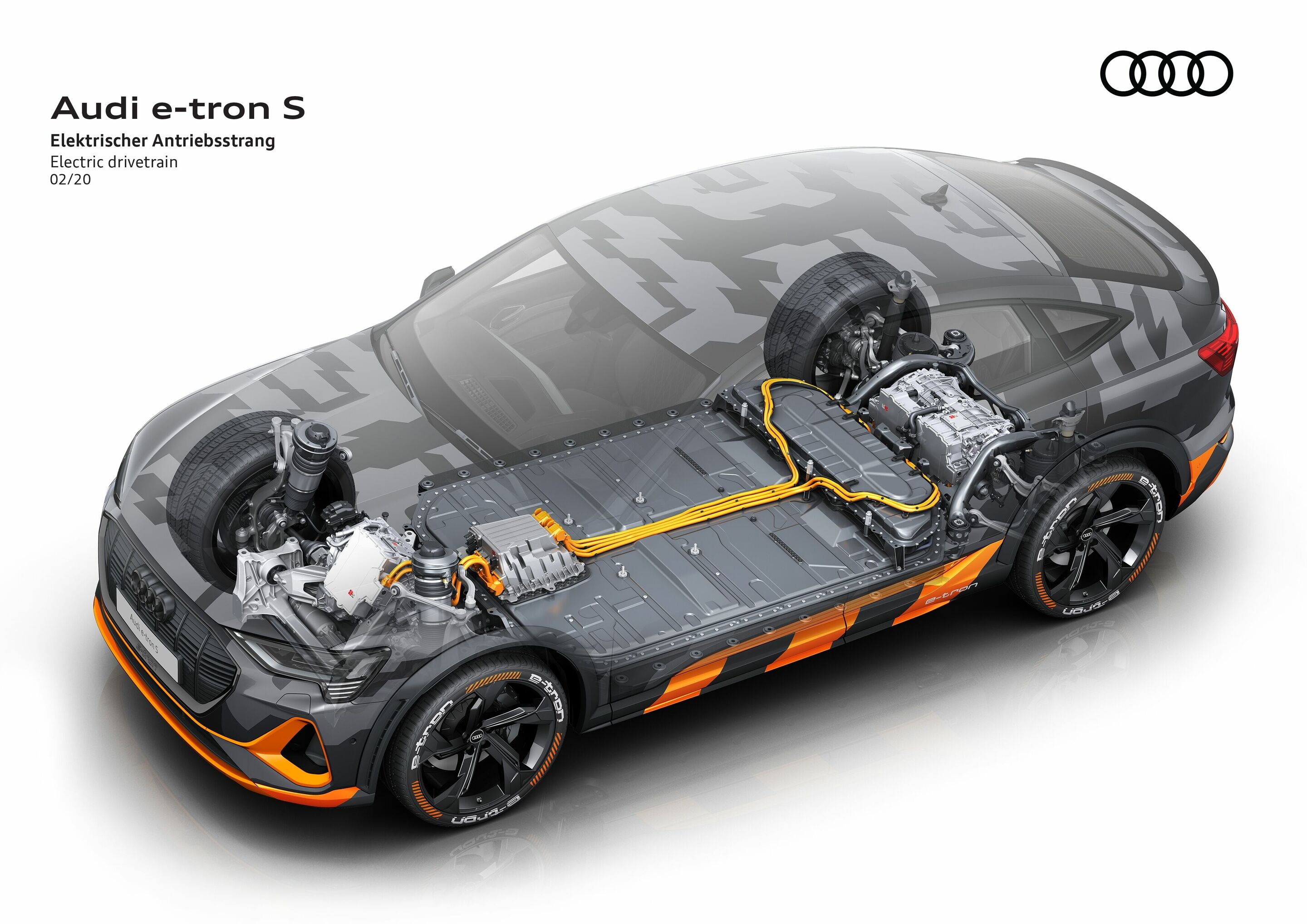quattro 2.0: electric torque vectoring
Back to overviewWith the Audi e-tron and the e-tron Sportback, the brand with the four rings is making strides into the sustainable future of transportation – and the future of the quattro drive system. The two electric motors on the front and rear axles enable electric all-wheel drive that ensures the best possible traction and sporty handling. The Audi e-tron** uses electric all-wheel drive with the benefits of the conventional sport differential.
Audi e-tron** and Audi e-tron Sportback**: electric all-wheel drive
Electric all-wheel drive regulates the ideal distribution of torque to both axles permanently and fully variably, combining the efficiency of a single-axle drive with the handling and traction of an all-wheel drive. When driven at a calm pace, the Audi e-tron** and e-tron Sportback** use only the rear electric motor for propulsion. If the driver demands more power than it can supply, the control units will activate the motor on the front axle. This happens predictively in many situations, even before slip occurs in icy conditions or during fast cornering, or if the car understeers or oversteers.
It takes just 30 milliseconds or so from the system detecting the situation to the drive torque from the electric motors kicking in. In combination with wheel-selective torque control, electric all-wheel drive offers excellent traction, outstanding stability and plenty of fun whatever the weather. The driver can adjust the character of the handling via the suspension control systems, from supremely stable to sporty.
In the Audi e-tron S and e-tron S Sportback prototypes, Audi is presenting the latest generation of electric all-wheel drive. Each of the two exceptionally dynamic electric SUVs comes with three electric motors on board, allowing drivers to experience the benefits of the conventional sport differential on the rear axle. Each of the two rear electric motors actuates one rear wheel directly via its transmission. As with the axles, there is no mechanical link. The torque is distributed between the rear wheels – through a process named electric torque vectoring – in a matter of milliseconds, and it is possible to engage extremely high torque.
If the car turns into a curve quickly, the electric motor will direct extra torque to the rear wheel on the outside of the curve, while the brakes will be applied to the inside rear wheel accordingly. The difference can amount to as much as 220 Nm (162.3 lb-ft), which translates to around 2,100 Nm (1548.9 lb-ft) at the wheels as a result of the gear ratios. The latency, i.e. the time offset, is only around a quarter of that of a mechanical system, while the torque is higher in electric torque vectoring.
The control units for electric all-wheel drive and the benefits of the conventional sport differential work closely together, which is what makes the high speed and precision of the control operations possible in the first place. Electronic Stabilization Control (ESC), the drive control unit (DCU), the electronic chassis platform (ECP) and the power electronics control units all have roles to play.
** The collective fuel consumption values of all models named and available on the German market can be found in the list provided at the end of this press information.
All terms in blue in the text are explained in detail in the technology lexicon at www.audi-mediacenter.com/en/technology-lexicon.
